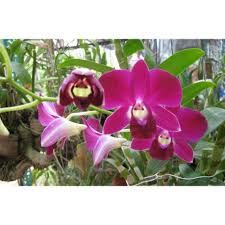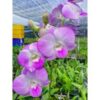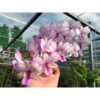# How to Properly Store Dendrobium Orchid Varieties During Transportation

Transporting Dendrobium orchids can be a delicate process, requiring careful planning and execution to ensure the health and vitality of the plants. Known for their stunning blooms and vibrant colors, Dendrobium orchids are cherished by horticulturists and enthusiasts alike. However, improper handling during transportation can lead to stress, damage, and even loss of the plants. This article provides a comprehensive guide on how to store Dendrobium orchid varieties effectively during transportation, ensuring they arrive at their destination in optimal condition.
## 1. Understanding Dendrobium Orchids
### 1.1 What Are Dendrobium Orchids?
Dendrobium orchids belong to the Dendrobium genus, which comprises over 1,800 species and numerous hybrids. These orchids are native to tropical and subtropical regions of Asia, Australia, and the Pacific Islands. Dendrobiums are known for their unique growth habits, which can vary from epiphytic (growing on other plants) to terrestrial (growing in the ground).
### 1.2 Why Transportation Matters
Transportation plays a crucial role in the health of Dendrobium orchids. Whether moving them for sale, gifting, or personal collection, proper storage during transit is essential to minimize stress and damage. Factors such as temperature, humidity, light exposure, and physical handling can significantly impact the orchids’ well-being during transportation.
## 2. Preparing Dendrobium Orchids for Transportation
### 2.1 Assessing Plant Health
Before transportation, assess the health of your Dendrobium orchids. Look for any signs of disease, pests, or stress. Healthy plants are more resilient during transit. Ensure that:
– Leaves are firm and green.
– Roots are healthy and not rotting.
– Flowers are not wilted or damaged.
### 2.2 Pruning and Cleaning
– **Pruning**: Remove any dead or damaged leaves, spent flowers, and stems. This will reduce the plant’s weight and help prevent injury during transport.
– **Cleaning**: Gently wipe the leaves with a damp cloth to remove dust and debris. This improves light absorption and overall plant health.
### 2.3 Watering
Proper watering before transportation is essential. Water the orchids thoroughly a day or two before packing them for transport. This ensures the plants are hydrated without being overly wet, reducing the risk of rot during transit.
## 3. Choosing the Right Packaging Materials
### 3.1 Containers
Select appropriate containers for transporting Dendrobium orchids. Consider using:
– **Plastic Pots**: Lightweight and sturdy, they provide good support for the plants.
– **Baskets**: Wire or woven baskets allow for air circulation and are suitable for mature plants.
– **Cardboard Boxes**: Use for larger shipments, ensuring they have adequate ventilation holes.
### 3.2 Protective Padding
To prevent damage during transportation, use protective padding such as:
– **Bubble Wrap**: Wrap the pots and plants gently to cushion them from impacts.
– **Newspaper**: Crumpled newspaper can be used to fill gaps in boxes and prevent movement.
– **Foam Sheets**: Use for added protection, especially for delicate flowers.
## 4. Temperature and Humidity Control
### 4.1 Optimal Temperature
Dendrobium orchids thrive in a specific temperature range, typically between 65°F and 85°F (18°C to 29°C). During transportation, it’s crucial to maintain a stable temperature:
– **Transport during Cool Hours**: If possible, plan transportation during early morning or late afternoon to avoid high temperatures.
– **Temperature Monitors**: Use temperature data loggers to monitor conditions throughout transit.
### 4.2 Humidity Management
Humidity levels are equally important for Dendrobium orchids. They prefer humidity levels between 50% and 70%. To maintain adequate humidity during transport:
– **Use Moisture Packs**: Place moisture-retaining packs or damp sphagnum moss in the packaging to keep humidity levels stable.
– **Ventilation**: Ensure there are enough ventilation holes in the packaging to allow air circulation without causing excessive moisture loss.
## 5. Light Considerations
### 5.1 Light Exposure During Transport
While orchids need light for photosynthesis, direct sunlight can be detrimental during transportation. Here’s how to manage light exposure:
– **Avoid Direct Sunlight**: Keep the orchids out of direct sunlight to prevent leaf burn and dehydration.
– **Use Light-Filtering Materials**: If using boxes, consider covering them with a light-filtering cloth to diffuse sunlight.
### 5.2 Post-Transportation Light Exposure
Once you reach your destination, place the orchids in a location with bright, indirect light to help them acclimate. Avoid placing them in direct sunlight immediately after transport, as this can shock the plants.
## 6. Handling During Transportation
### 6.1 Loading and Unloading
When loading and unloading Dendrobium orchids, take extra care:
– **Lift Gently**: Always lift plants by the pot, not the stems or leaves.
– **Secure Position**: Ensure that plants are securely positioned in the vehicle to prevent shifting during transit.
### 6.2 Avoiding Jostling
Minimize jostling during transport by:
– **Using Proper Tie-Downs**: Secure containers to prevent movement.
– **Driving Smoothly**: Avoid sudden stops and sharp turns to minimize stress on the plants.
## 7. Special Considerations for Long-Distance Transportation
### 7.1 Extended Transportation Time
For long-distance transport, additional precautions are necessary:
– **Plan for Breaks**: If transporting over several days, plan for breaks to check on the orchids.
– **Rehydrate if Necessary**: If orchids appear dehydrated during long trips, consider misting them lightly with water to revive them.
### 7.2 Customs and Regulations
If transporting internationally, be aware of customs regulations regarding plant imports. Ensure that:
– **Documentation**: Obtain necessary permits or phytosanitary certificates.
– **Inspection**: Prepare for potential inspections by authorities upon arrival.
## 8. Acclimating Dendrobium Orchids Post-Transportation
### 8.1 Initial Setup
Once you’ve arrived at your destination, give the Dendrobium orchids time to acclimate. Follow these steps:
– **Avoid Immediate Re-potting**: Do not re-pot immediately; allow them to adjust to their new environment.
– **Monitor Conditions**: Check temperature and humidity levels, adjusting as necessary.
### 8.2 Gradual Reintroduction to Light
– **Start in Indirect Light**: Initially place orchids in a shaded area.
– **Gradually Increase Light**: Over a few days, gradually reintroduce them to brighter light conditions.
### 8.3 Watering After Transport
– **Assess Moisture**: Check the moisture level of the growing medium. Only water if it feels dry to the touch.
– **Avoid Overwatering**: Be cautious not to overwater, as roots may be stressed from transportation.
## 9. Troubleshooting Common Issues
### 9.1 Wilting Leaves
If Dendrobium orchids exhibit wilting after transport, consider:
– **Water Stress**: Check the moisture level and water if necessary.
– **Environmental Shock**: Allow time for the plants to acclimate to their new environment.
### 9.2 Yellowing Leaves
Yellowing leaves can indicate:
– **Overwatering**: Ensure the growing medium drains well.
– **Nutrient Deficiency**: Consider providing a diluted orchid fertilizer after acclimation.
### 9.3 Flower Drop
Flower drop may occur due to:
– **Temperature Shock**: Ensure stable temperatures during and after transport.
– **Lack of Light**: Ensure orchids receive adequate light once settled in.
## 10. Conclusion
Transporting Dendrobium orchids requires careful planning and attention to detail to ensure their health and vitality. By following these guidelines for preparation, packaging, temperature and humidity control, and handling during transportation, you can significantly reduce the risk of stress and damage. Additionally, providing proper care during the acclimation period post-transport will help your orchids thrive in their new environment. With the right approach, your Dendrobium orchids can arrive safely and continue to flourish, adding beauty to your garden or collection. Happy transporting!

